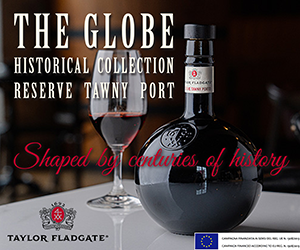The 2020-2021 harvest report was prepared by Dr Laura Catena, Chief Winemaker Alejandro Vigil, and Viticulturist Luis Reginato.
During the beginning of spring, on October 5th, there was a frost which a ected mostly the early ripening varieties, the white varieties. Anti-frost candles were lit throughout the Uco Valley, which helped to minimize the damage. Fortunately, bud break for malbec and Cabernet had not yet occurred, so the most important red varieties were spared. Beginning in December, brief summer rains started and recurred every 15 days approximately. These are the classic continental rains in our region.
HIGHLIGHTS
In general, the 2021 harvest year was cool and with slightly increased rains. We had an average of 15-20% less degree-days than in 2020, and the weather overall was a bit cooler than average. The yields for white varieties were low due to the October frost. Yields for red varieties were normal, with excellent quality and healthy grapes. Because of the cool climate, the reds achieved great concentration and ripeness of the skins with moderate sugars and optimal acidity.
In the winter of 2020, we had more snow and rain than in previous years, and that meant more available glacier water and stunning photographs. The sight of snow-capped mountains next to green, ripening vineyards contrasted with the paucity of tourists who would have delighted in the stunning sights. Given the historic reduction in glacier water that has resulted from climate change, it was a relief to have a year with abundant water. They are short and violent, but due to the well-drained soils and brevity, the main e ect is to provide a necessary amount of water to vines that are stressed due to the summer heat. These rains, which were accompanied by cloudy days, resulted in lower than average temperatures for January, February, March and April, and the slow ripening of the red varieties until the end of April.
What we appreciate about 2021 is how even the weather was throughout Mendoza. There will be outstanding wines from the best vineyards, such as Adrianna in Gualtallary and Nicasia in Paraje Altamira. But also, there should be some excellent entry-level wines this year, and that is wonderful for our region as a whole. Fortunately, there were no important hail events in 2020.
Adrianna Vineyard: In Adrianna, the yields were normal. Our Chardonnay had not yet gone through bud break when the frost occurred on October 5th, so it was not affected. It was a cool year with temperatures 18% below 2020. Rainfall did not increase like in other parts of Mendoza. (Over the 12 months before harvest, it rained 350mm - 14 inches-).
Nicasia Vineyard: Temperatures in Paraje Altamira were 15% lower than in 2020 but slightly higher than the historical average. Precipitations were slightly above the historical average at 380 mm (15 inches).
Angélica Sur Vineyard: Located in El Cepillo, this vineyard saw more rain than usual at 585 mm (23 inches) and was mostly dry-farmed this year. Temperatures were cooler than in 2020 and lower than the average. Quote about Cabernet Sauvignon by Fernando Buscema, Winemaker for Nicolás Catena Zapata: “2021 had some similarities to 2016 in the cool climate and somewhat increased rains. But it was less extreme than in 2016.
Cabernet Sauvignon can be very sensitive to extreme heat or drought, provoking what the French call “blocage.” Blocage can result in harsh tannins and overly herbal flavours/aromatics. 2021 provided quite the opposite. The Cabernet Sauvignon ferments have beautiful fresh fruit, optimal acidity and relatively low alcohols, allowing for longer macerations that will yield wines of elegance, longitude, texture, and perfect balance. A great year for Cabernet Sauvignon in high altitude Mendoza.”
About the 2021 malbec, winemaking director Alejandro Vigil says, “The vintage started with a dry spring, followed by a humid summer with cooler climate in the Uco Valley. The dry spring set the stage for moderate yields, and the cool, sunny summer with sporadic rains kept the vines happy. The result in the Uco Valley was an early harvest of malbec with perfect phenolic ripeness and acidity, and lowish potential alcohol (between 13 and 13.5).”
Most Extensive Terroir Study in the World, published by the Catena Institute, March 2021 After the complex 2020 year and in the middle of the pandemic, 2021 began with the great news that on February 3rd, our article “Terroir and vintage discrimination of malbec wines based on phenolic composition across multiple sites in Mendoza, Argentina” was going to be published in Scientific Reports, a journal belonging to the Nature group. Scientific Reports is one of the most-cited journals in the world and has a rigorous peer review acceptance process.
This study by the Catena Institute of Wine with other institutions is the first in the world to compare four different levels of terroir – three large regions, six departments, 12 geographical indications, and 23 individual parcelas (smaller than one hectare) over three different vintages (2016, 2017 and 2018). Detailed climate data is provided in the study, along with the chemical analysis of 201 wines. For the first time, this study shows that the terroir e ect can be chemically described from vintage to vintage in larger regions as well as in smaller parcelas (parcels). We were able to predict with 100% certainty the vintage of each wine in our study through chemical analysis. In addition to predicting the vintage of each wine, 11 out of 23 parcelas could be identified by chemical analysis with 100% certainty while the remaining 12 parcelas could be identified with up to 83% certainty. By combining sensory and volatile compound analysis with the chemical analysis in this study, the Institute will be able to add even better reliability to its parcela terroir prediction model.
The article is open-access and can be found here.

 quicksearch
quicksearch






